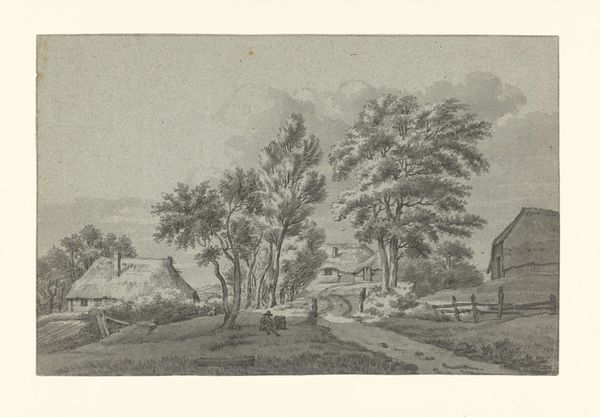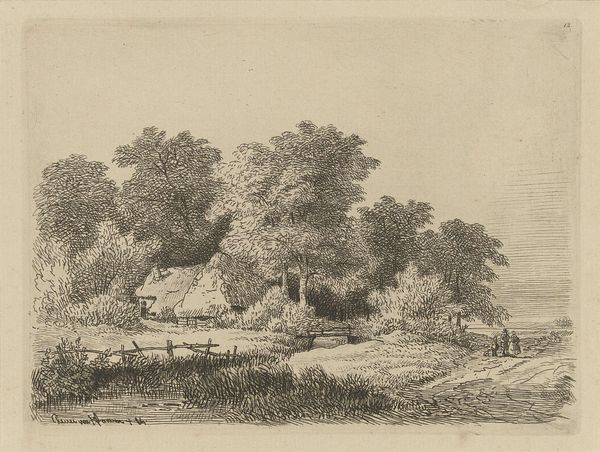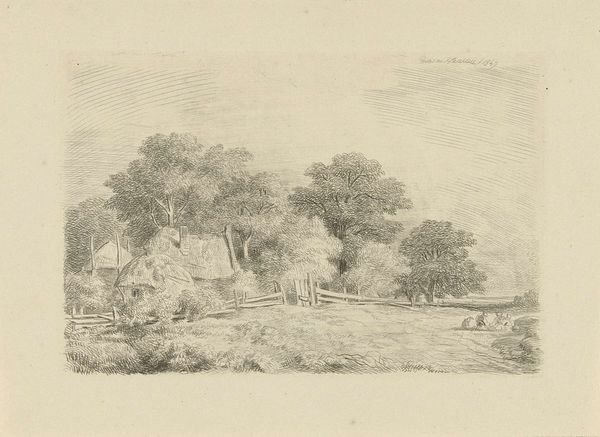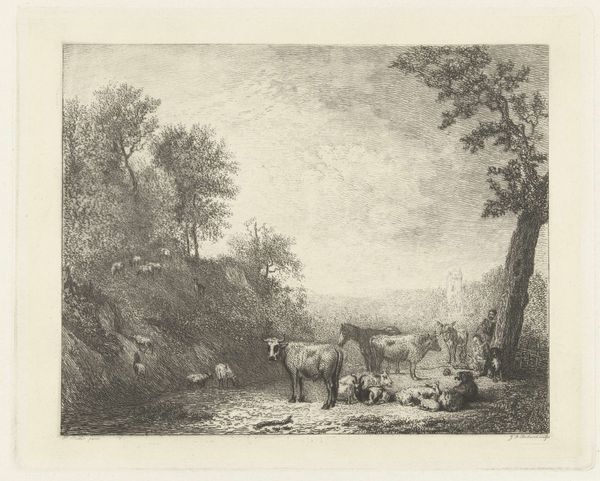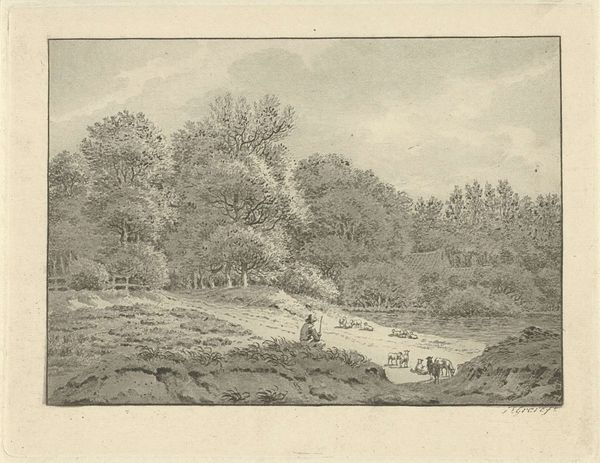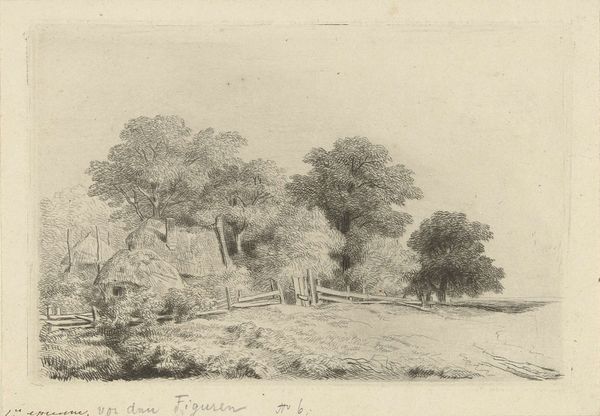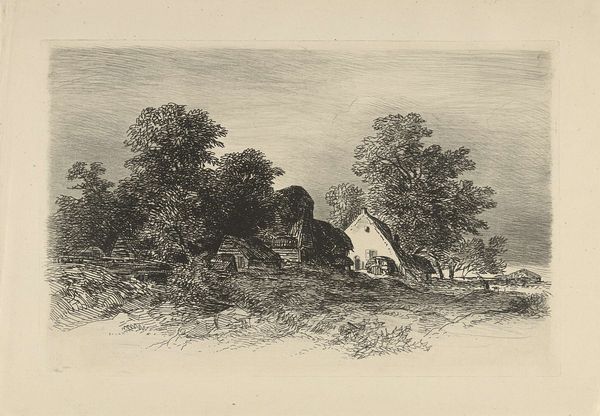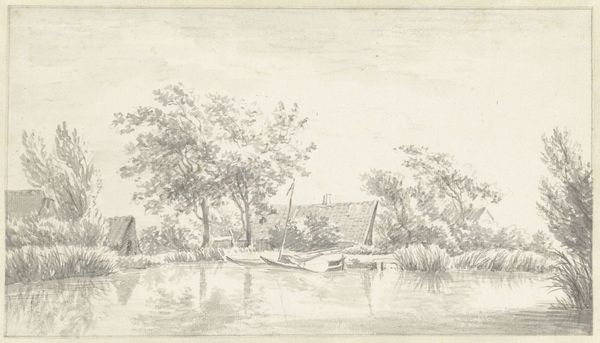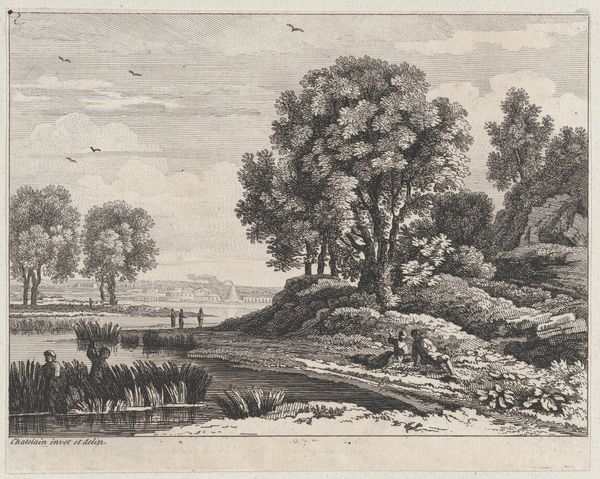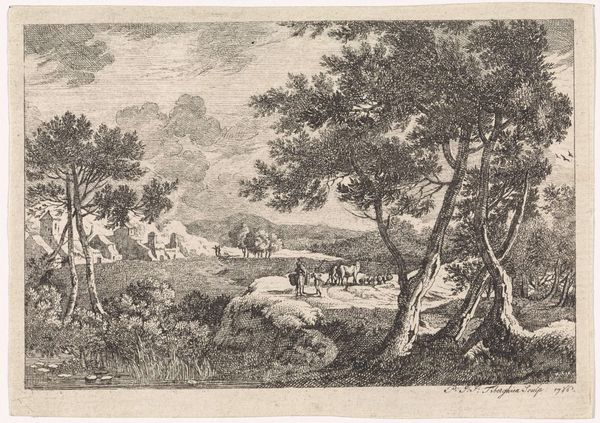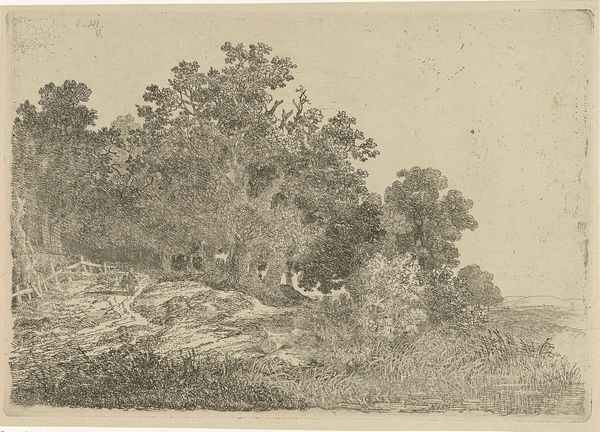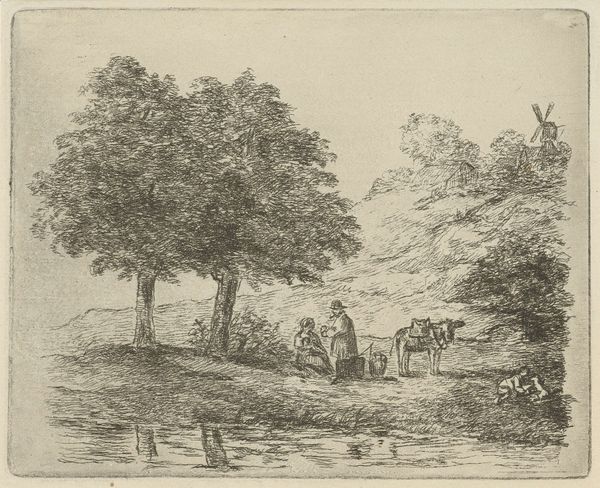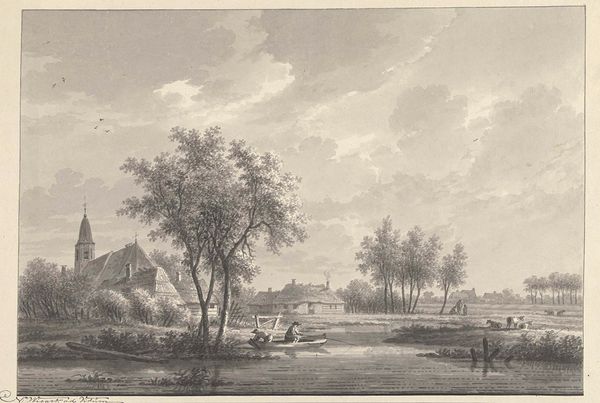
drawing, pencil
#
pencil drawn
#
drawing
#
dutch-golden-age
#
pencil sketch
#
landscape
#
pencil drawing
#
pencil
#
realism
Dimensions: height 123 mm, width 165 mm
Copyright: Rijks Museum: Open Domain
Curator: Here we have Remigius Adrianus Haanen's "Boerderij bij een bruggetje", or "Farm by a Little Bridge," created in 1849. It’s a delicate pencil drawing, exhibiting a strong sense of realism and a nod towards the Dutch Golden Age landscape tradition. What strikes you initially about this piece? Editor: It feels…peaceful. There’s a certain stillness to the scene despite the intricate detail. The smallness of the figures emphasizes their connection with this abundant natural setting. It seems to suggest themes around peasantry and the simple joys of country living, which, given the historical context, can also raise complex social questions of land ownership and rural exploitation. Curator: Absolutely. And looking at Haanen's technique, the varied densities of the pencil work are impressive, building textures and creating a tactile experience. I'm interested in the accessibility of pencil as a medium in representing landscape. He isn’t just rendering what he sees; he's engaging in a labor-intensive process. Each line and shadow requires time, focus, even a certain type of physical engagement. The consumption of paper and pencils as tools themselves in 1849 has meaning, representing forms of literacy and expressions affordable to some demographics more than others. Editor: I agree. I'm struck by the absence of clear hierarchy. The bridge isn't just a bridge; it's a connector, blurring lines between nature and the made environment. And this attention to detail makes me think about what isn't shown, as much as what is: for instance, are these happy, laboring people free, or are they subjects of a social system in which the ruling class dominates, while reaping its financial rewards and privileges from an agricultural working class. Is it romanticization? I also think of it as something radical within art: foregrounding a demographic too long denied fair economic advantages. Curator: I see what you mean. Haanen’s piece provides a subtle challenge to what constituted 'high art' at the time by focusing on the material reality of the Dutch countryside and labor connected to that terrain, which also then challenges us now to engage actively in the cultural narratives they construct about that era. It brings up ideas about access, affordability, social realism versus idealization. Editor: Precisely. It invites critical thought not only on the construction of images but also on historical inequities still alive in art and society. And if we are prepared, perhaps Haanen offers us ways to reflect on where this realism begins, or should begin to end. Curator: Well, looking closely at the physical work, with its layers of mark-making, is one way we might begin. Editor: Indeed. Art, like the simple act of crossing a bridge, involves continuous negotiation—historical, social, and aesthetic.
Comments
No comments
Be the first to comment and join the conversation on the ultimate creative platform.
